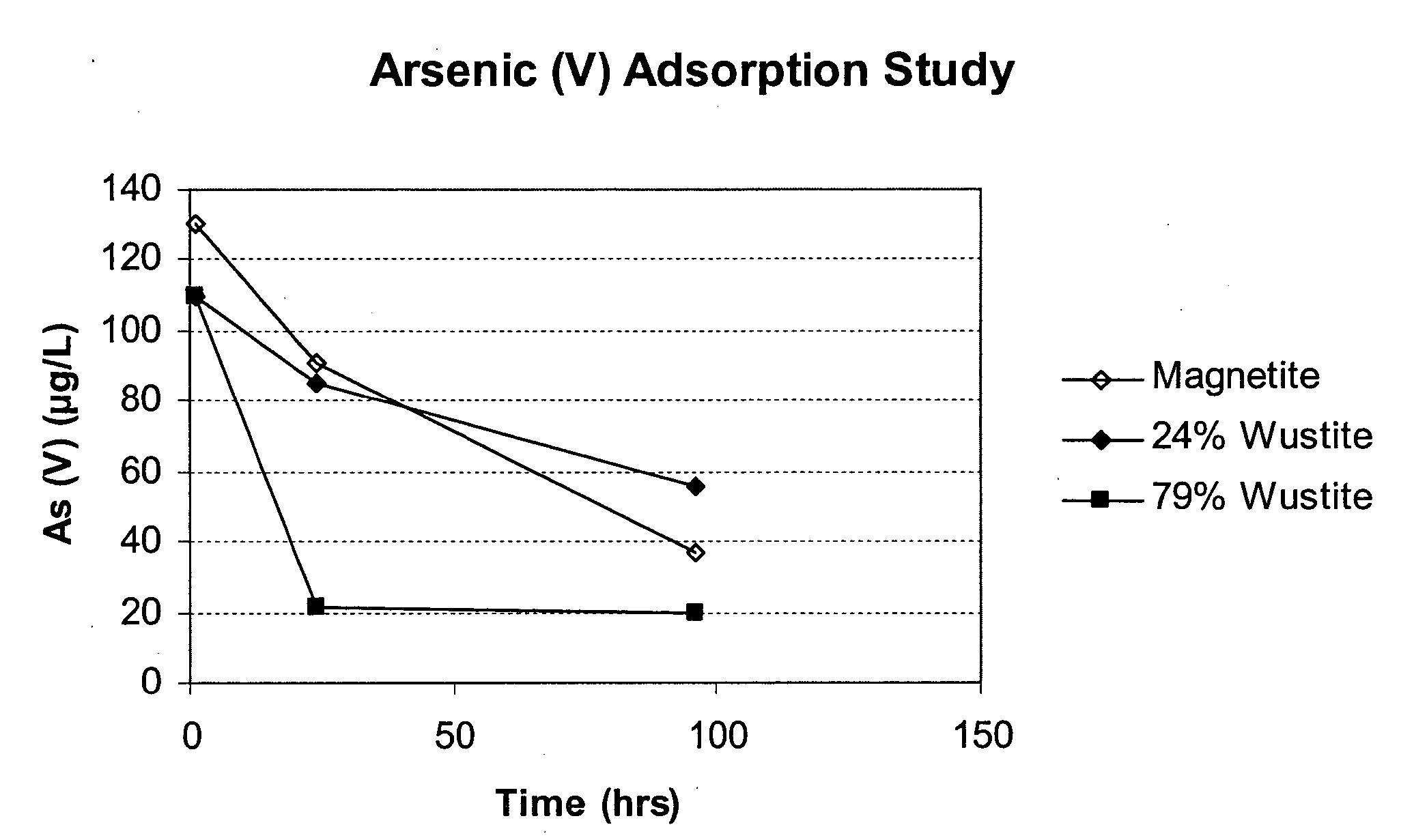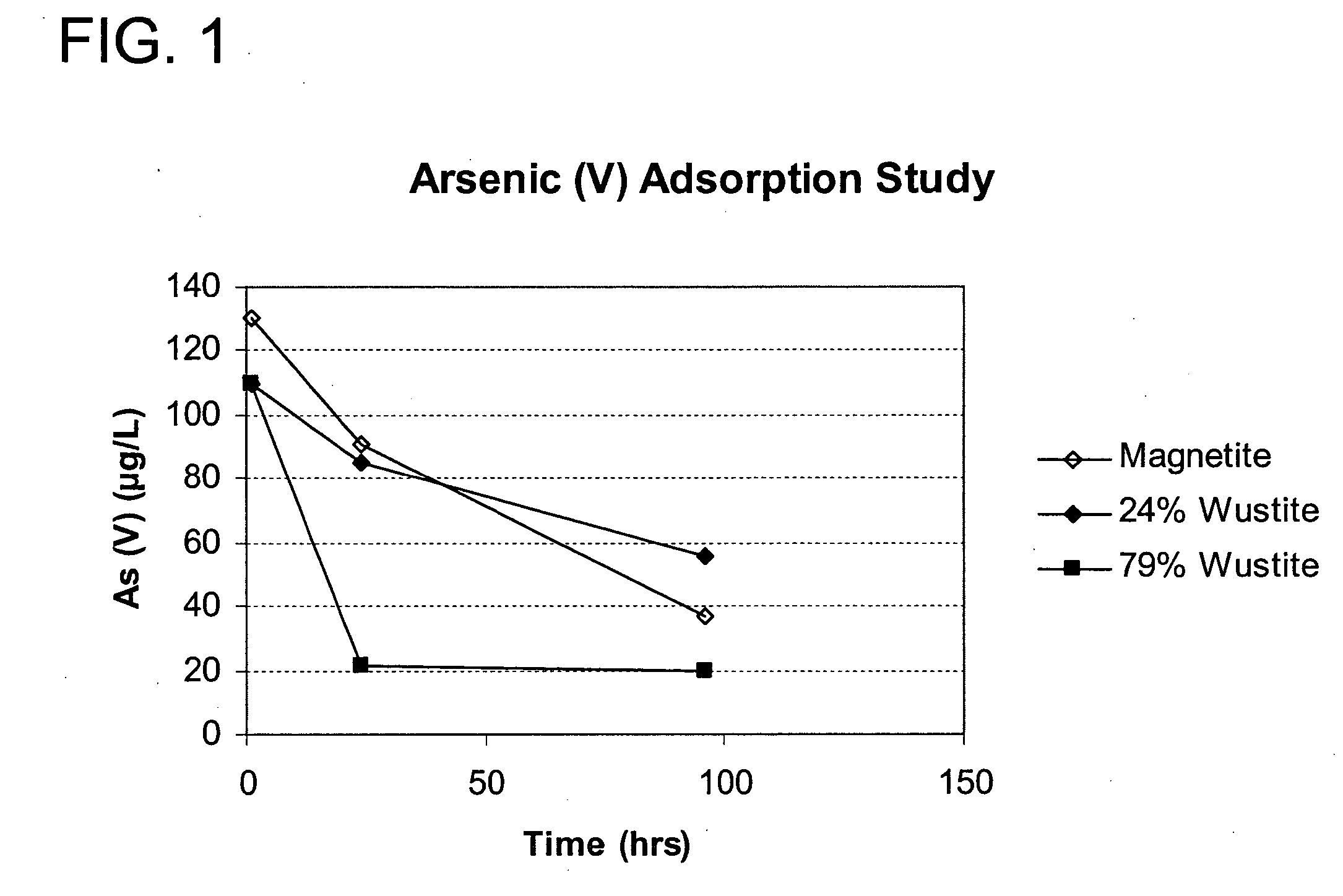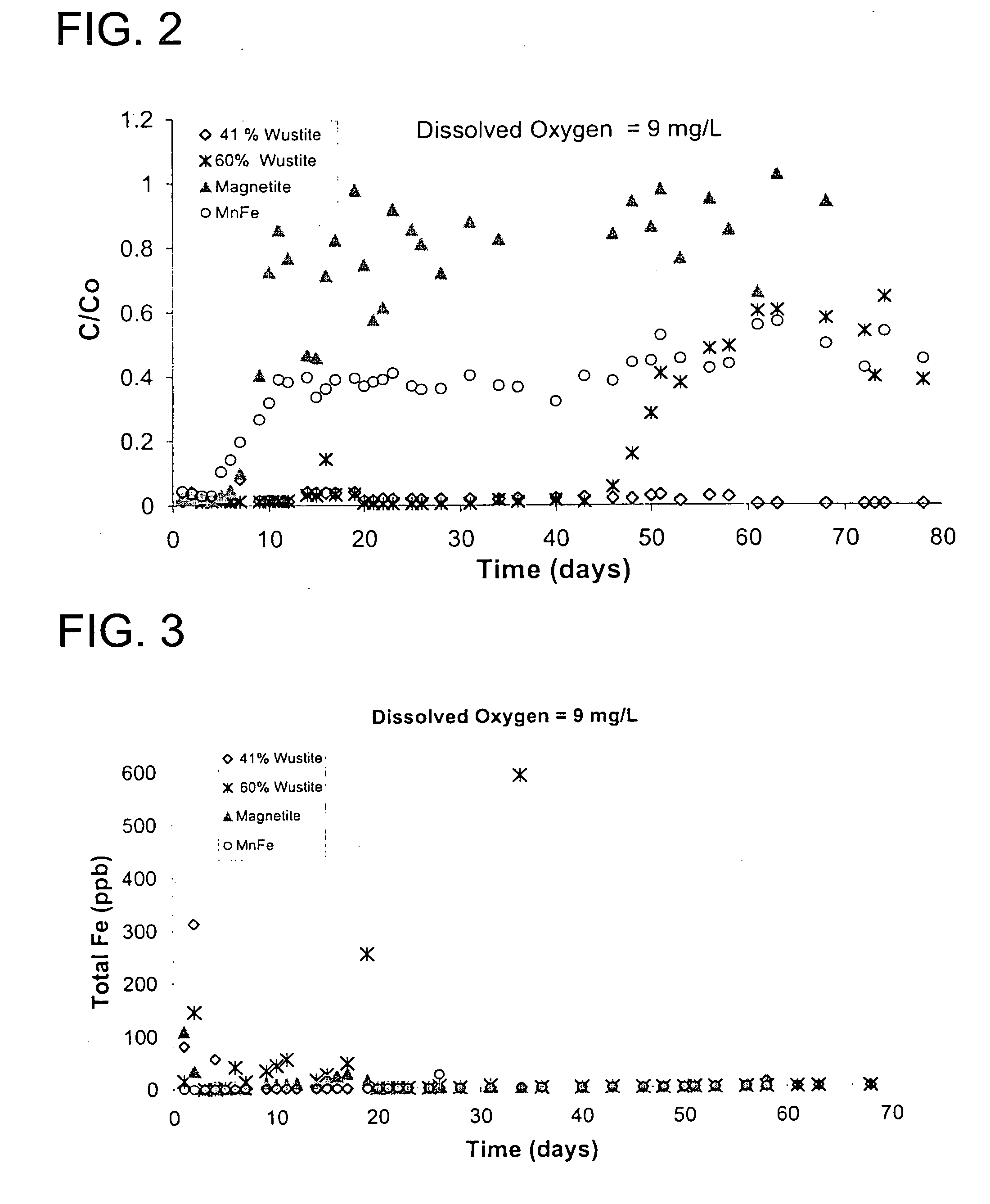Reactive adsorbent for heavy elements
a heavy element and adsorbent technology, applied in the direction of filtration separation, multi-stage water/sewage treatment, separation process, etc., can solve the problems of ineffective or unacceptable treatment levels, adverse effects of a particular method, ineffective process for arsenic-impacted water, etc., and achieve high level of remediation
- Summary
- Abstract
- Description
- Claims
- Application Information
AI Technical Summary
Benefits of technology
Problems solved by technology
Method used
Image
Examples
Embodiment Construction
[0026] Referring now to the drawings wherein the showings are for purposes of illustrating the preferred embodiment of the invention only and not for purposes of limiting the same, the Figures show contaminant removal performance using various non-limiting and exemplary compositions of the adsorbents used in the practice of this invention, specifically targeted toward the removal of arsenic, although it is recognized that other heavy-elements are equally applicable in this invention.
[0027] While not being held to any one theory of operation, it is believed that at least one reason for the excellent performance of the adsorbent according to the invention is attributable at least in part, to the fact that the main phase of the inventive adsorbent is a non-stoichiometric ferrous oxide Fe1-xO, which exists with favorable surface structure, and distribution of lattice defects including vacancy clusters. It is believed that the presence of defect clusters containing vacancies is an impor...
PUM
| Property | Measurement | Unit |
|---|---|---|
| temperature | aaaaa | aaaaa |
| diameter | aaaaa | aaaaa |
| diameter | aaaaa | aaaaa |
Abstract
Description
Claims
Application Information
 Login to View More
Login to View More - R&D
- Intellectual Property
- Life Sciences
- Materials
- Tech Scout
- Unparalleled Data Quality
- Higher Quality Content
- 60% Fewer Hallucinations
Browse by: Latest US Patents, China's latest patents, Technical Efficacy Thesaurus, Application Domain, Technology Topic, Popular Technical Reports.
© 2025 PatSnap. All rights reserved.Legal|Privacy policy|Modern Slavery Act Transparency Statement|Sitemap|About US| Contact US: help@patsnap.com



